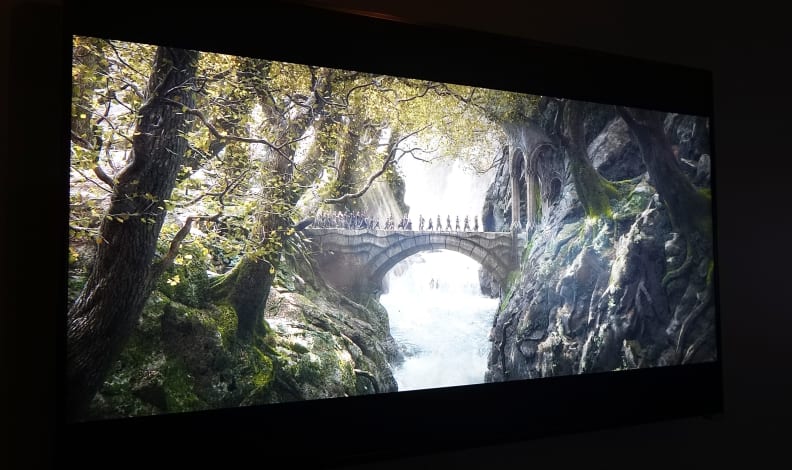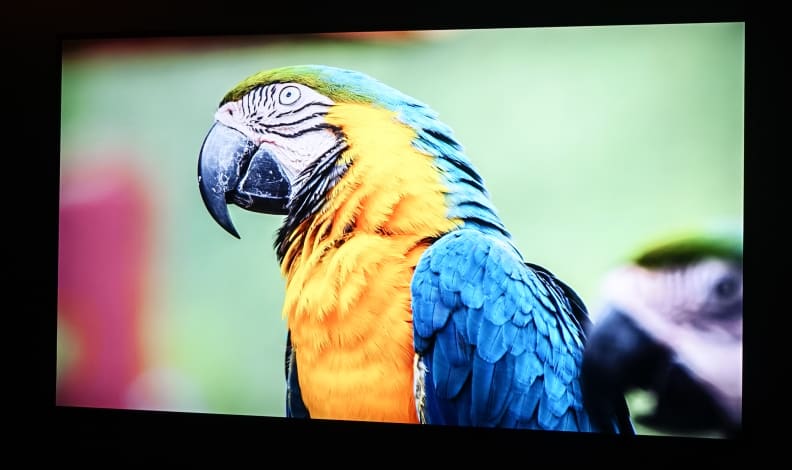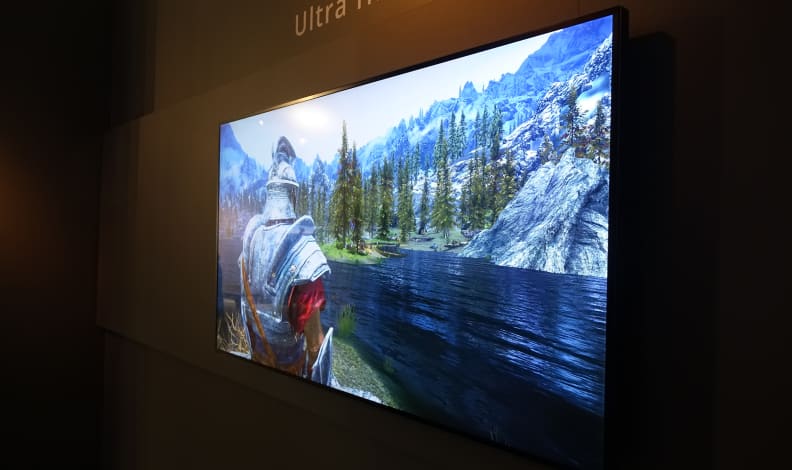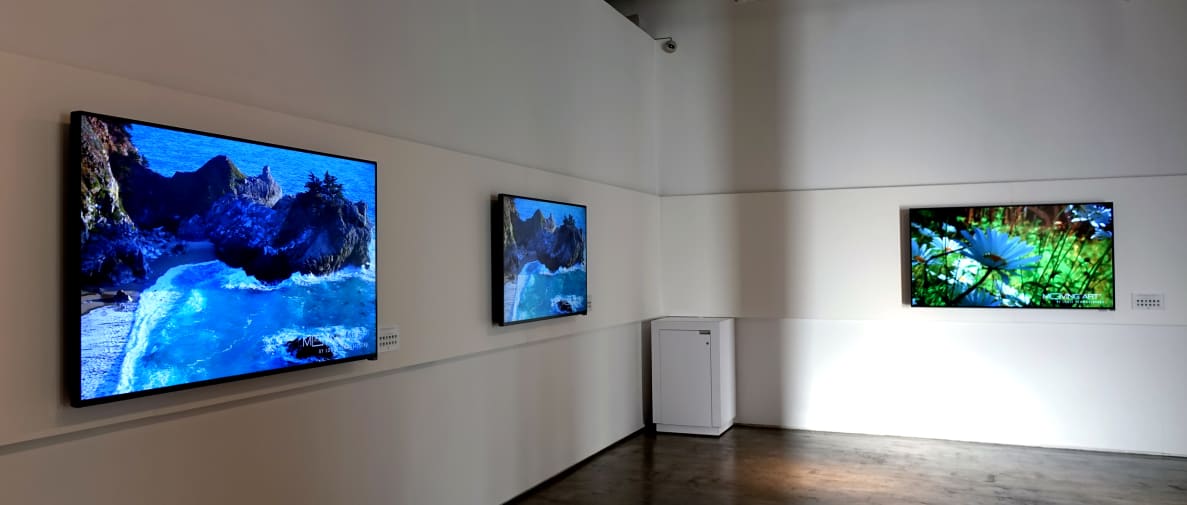Make no mistake: The Vizio P652ui P-Series (MSRP $2,199) is a big deal.
Vizio, traditionally positioned as a "value" brand, chose to move the ball forward compete in the "performance" category with higher-priced models from the likes of Samsung, LG, Panasonic, and Sony. That's a long climb into a crowded and intensely competitive space, but Vizio has honed its business savvy for years, mastering cost control and supply chain management. They have the methods, but do they have the product? Based on our time with the P652ui, the answer is yes.
This 65-inch 4K (UHD) TV delivers full-array LED backlighting with local dimming, input support for HEVC, HDCP 2.2, and HDMI 2.0, a six-core upscaling/motion processor, 8-bit color depth plus FRC, 120 fps capability—if that sounds like insufferable techno-jargon to you, just trust that it's impressive.
Right now there's only one other option if you're on the prowl for a 4K TV with full-array local dimming, and it costs $8,000. In a true-to-form Vizio tactic of slashing prices to gain market share, its 50-inch full-array will start at just $999.
In fact, regardless of features or frills it's almost impossible to find 4K TVs that compete with the P-Series in price. The rainbow of goodies these TVs deliver is staggering and there's currently no better option if you want a future-proofed, efficacious, and affordable product.
But don't take my word for it—we expect to have one of the P-Series TVs in our lab as early as next week, so check back for the full review.
Picture This
Recently, I scoped out every TV in Vizio's 4K P-Series, from smallest to largest, at a Vizio-Sponsored event in NYC. The star of the show was undoubtedly the 65-inch model.
The show room was arranged in the manner of a display "shootout," i.e. multiple side-by-side comparisons of the P652ui pitted against the Samsung HU8550. Both were allegedly set to their defaults in Movie mode, though the Samsung image was overscanned, which seems a bit unfair.
It's also a little questionable why this particular Samsung was chosen as the only comparison model. True, it's a 4K LED from the leading TV manufacturer, and with Samsung's 55-inch model priced at about $2,200 Vizio has a great "all this for half the price!" story. However, the Samsung HU8550 uses an edge-lit LED screen, which has inherent weaknesses against a full-array model like the Vizio P-Series. The real match-up we want to see is the P-Series duking it out with the Sony X950, the only other readily available full-array LED 4K, which costs about 7x more than the Vizio.

Full-array local dimming dramatically improves the darkness of shadow tones and the luminance of picture highlights.
The demo was dedicated specifically to picture quality comparisons—there was little in the way of design frills or smart features. Since it's unlikely that Vizio's smart features would hold a candle to LG's webOS or Samsung's Smart Hub, it was probably for the best.
The whole story here is the picture quality, and Vizio had plenty to say on the subject.
Dynamic Range
One of the most important facets of picture quality is dynamic range, or the difference between a TV's darkest and brightest picture elements. High dynamic range has been a major goal of display manufacturers for years, and it's also the main reason plasma and OLED TVs look so good. The only way LCDs like the P652ui can achieve a truly impressive dynamic range is through a technology called full-array local dimming.
Most TVs are edge-lit, meaning the light-emitting diodes (LEDs) that make up the backlight are aligned along the perimeter of the screen. By comparison, full-array TVs feature evenly-spaced LEDs behind the entirety of the screen.
This is generally a better choice for picture quality, but is also (usually) a much more expensive design. Implementing a function called local dimming allows the LEDs to grow brighter or darker independently of one another, creating stellar possibilities for high dynamic range.

The P652ui's full-array local dimming gives it dynamic abilities beyond almost every other 4K TV on the market.
The 65-inch P-Series employs 64 local dimming zones in an 8x8 LED grid, meaning that there's one zone for every 129,600 pixels. If that sounds like too coarse a solution to ever look good, keep in mind that the P-Series TVs are also equipped with what Vizio calls "Active Pixel Tuning," an algorithm that regulates dimming on a pixel level.
I can't scientifically confirm whether or not it actually works yet, but I can relate what I saw. During one demo, we watched upscaled scenes from Harry Potter & The Deathly Hallows on Blu-ray disc. There was a striking difference between the edge-lit Samsung TV and the more favorable Vizio P652ui.
At one point, Vizio paused the demo on a black velvet box containing Ravenclaw's Diadem (if you don't know what this is, seriously, go read Harry Potter right now) and the effect of the local dimming was profound. The silver of the diadem looked notably brighter compared to the edge-lit TV, while the black patterns within the box were rendered in better detail.

Very dark tree branches against a bright, crisp sky or snowy backdrop is much easier for TVs to render when using a full-array backlight.
This TV's local dimming also does wonders for the black bars that are present during letterbox (Blu-ray) or 4:3 content—those parts of the screen are effectively off, so there's no annoying light bleed or clouding at the edges of the picture.
Additionally, the P-Series simply looked less "polluted" than the comparison TV, lacking the usual blue/yellow haziness that many LCDs suffer from. This has everything to do with how TVs use levels of light to create color.
Color Production
Fortunately, the way TVs render color is fairly simple to understand. The human eye sees three primary colors of light: red, green, and blue wavelengths. TVs combine and mix those colors to create other colors, including neutral shades like gray and white.
The brightest colors on a TV require a lot of light to translate effectively to the eye, which can become a drawback for edge-lit TVs, as they offer less luminance. The P652ui's heightened dynamic ability could skirt this shortcoming—colors looked less murky. On the other hand, very low-light colors looked a bit washed out during the side-by-side demonstration.

Because of it's full-array backlight, the P652ui seems to exercise better control over color luminance.
The most telling example was during a scene from The Hobbit: Desolation of Smaug, where the Bilbo and the Dwarves are walking in the forest. At first glance, the comparison TV actually looked more color-rich: Legolas' skin was reddish bronze like he'd just been vacationing in Rohan, and burnt orange leaves strewn along the ground looked slightly more autumnal.
After a few moments, however, I started to notice that neutral tones—such as the reflection of light from an elven sword—were much cleaner and more natural-looking on the 65-inch P-Series.

The P-Series appears to render colors with better color neutrality than its competition, but at the possible cost of overall color saturation.
Generally, each scene possessed less pollution in neutral shades, and additionally, less extremity between gradated areas of the picture. Whether the P-Series' accuracy means giving up more deeply saturated low-light colors remains to be seen.
Reps from Vizio had no comment on whether the P-Series would produce more color than current HD TVs. While many of 2014's high-end 4K televisions are capable of wider, more-saturated color spaces, the apparent focus of the P-Series is to "perfect what is already available."
Motion Performance & Gaming
Another of the side-by-side demos I saw was particularly troublesome for the comparison TV, the Samsung HU8550: a series of horizontal lines and text passing at different speeds across the screen. Lines of text that were wholly legible on the P-Series were all but artifact-filled mush on the comparison model. Again, these weren't controlled lab conditions so we without absolute judgement, but it gave some food for thought.
Each P-Series TV wields a 120 Hz native panel (there will also be a version of the 50-inch with only a 60 Hz panel). For reference, 120 Hz panels refresh each image at 200% speed compared to their predecessors.
One of the coolest things about the P-Series TVs is a function called "High Velocity Mode," which will supposedly allow PC gamers to play games at up to 120 fps (frames per second) through one of the HDMI inputs.

The P-Series TVs can allegedly render PC games at up to 120 frames per second.
While I didn't play any games during the demonstration, I did get to see Skyrim rendered in glorious 4K resolution, and it looked terrific. I rotated around the character with a mouse, and there was little in the way of tearing or stuttering—a good sign, even if it proves nothing.
The same engine and processor that regulates the "High Velocity Mode" will also, apparently, initiate a 24 fps "film mode" whenever such content is detected over the display identification channel.
The Verdict
Worth the wait
We've been eager to review one of Vizio's P-Series televisions since CES in January, and it looks as though that time is nigh. Sure, all the special features and high-end tech is exciting, but it's the price tag that steals the show: full-array 4K LED starting at $999.
If the P-Series TVs are half as good as they looked during Vizio's demonstrations, Vizio could force the entire industry to start dropping its MSRPs for 4K far earlier than it would like. That's a tough pill to swallow for manufacturers but great news for consumers.
We expect to receive a test sample in the next week or two—stay tuned for the full review, and please comment if you have any questions or concerns for us to consider once we have the TV in-house.
Meet the tester
Lee was Reviewed's point person for most television and home theater products from 2012 until early 2022. Lee received Level II certification in TV calibration from the Imaging Science Foundation in 2013. As Editor of the Home Theater vertical, Lee oversaw reviews of TVs, monitors, soundbars, and Bluetooth speakers. He also reviewed headphones, and has a background in music performance.
Checking our work.
Our team is here to help you buy the best stuff and love what you own. Our writers, editors, and experts obsess over the products we cover to make sure you're confident and satisfied. Have a different opinion about something we recommend? Email us and we'll compare notes.
Shoot us an email

